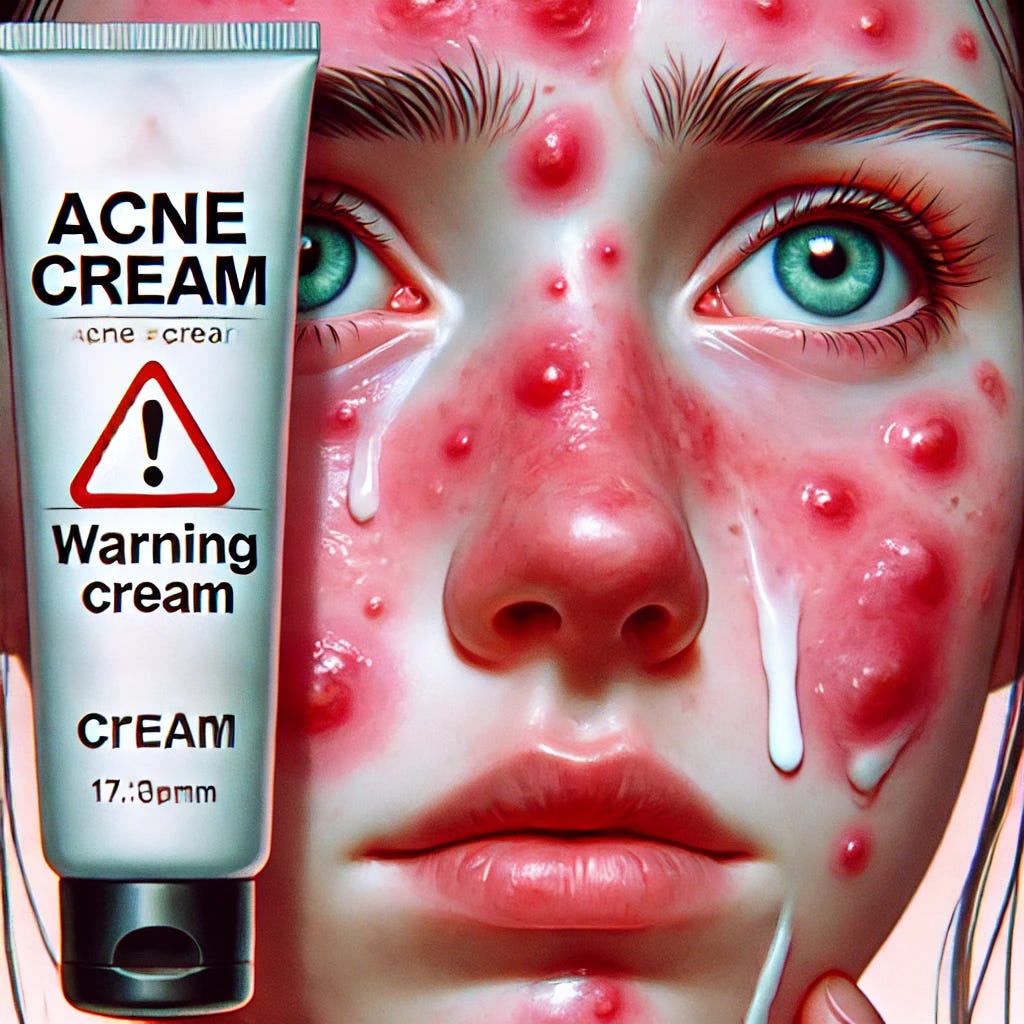This Acne Cream Ruined My Skin
or maybe not
Mondays can be a slog, but not here. We’re all about starting the week with insights that make you go, "Hmm... why didn’t I think of that?" Ready to conquer this week like a true trailblazer? Let's do this!
But before I share anything, here’s a lil task for you:
📌 Write down one big goal for the week and break it into three smaller steps. Bonus points if you share it with us - accountability is powerful
Now, let’s start…
My ‘Roaccutane’ journey
If you’ve struggled with acne, you’ve probably tried them all - promising a clear, glowing face in just weeks. Spoiler alert: it’s not always that simple. For me, the journey with acne creams has been more like a chaotic experiment, with moments of hope, frustration, and lessons I didn’t expect to learn along the way.
When acne became my unwanted companion
I wasn’t the kid with the occasional zit. Oh no. Acne and I became inseparable somewhere around my teenage years, and the relationship only grew stronger into my twenties. Pimples on my forehead, clusters on my cheeks - it was relentless.
At first, I thought I could tackle it with drugstore solutions. You know the ones: brightly colored bottles that boast “fast action” and “dermatologist-approved” on the label. My bathroom counter looked like a skincare aisle by the time I was done experimenting.
Some worked for a week, others for a day, and then there were the ones that made my skin worse. Every time a new product failed, I’d feel defeated - like my acne was winning some invisible battle.
The appointment that changed things
When I finally dragged myself to the GP, I was skeptical. Would this be another round of false promises? But after listening to my skin struggles, the doctor recommended a prescription cream. I’ll be honest; I didn’t expect much.
I left with a tube of benzoyl peroxide cream and a word of caution: “This might dry out your skin, so go easy at first.” Dry out my skin? That was an understatement. Within two days, my face felt like it had been scorched. Every smile or frown was a painful reminder that this cream was not to be underestimated.
Now, trial and error
The first few weeks were tough. I applied the cream at night, hoping for a miracle by morning, but all I got was redness and flaking. I had to learn the hard way to moisturize religiously (something I’d previously ignored) and reduce how often I used it.
When things finally balanced out, I noticed something amazing: my pimples were shrinking, and new ones weren’t popping up as often. For the first time in years, I could see progress. But here’s the thing about acne - you can’t get too comfortable.
The acne came back
A few months in, my skin seemed to plateau. Old spots faded, but new ones found their way in. It felt like starting over, except this time, I had a tool that at least helped control the chaos.
My GP decided to switch things up and prescribed a combination cream with adapalene and benzoyl peroxide. This one felt gentler, but the results were slower. I had to remind myself that treating acne isn’t a sprint - it’s a marathon.
One of the biggest lessons I learned during this journey was that acne creams are only part of the solution. They treat the symptoms, but managing acne often means looking at the bigger picture:
Diet: Cutting back on sugar made a noticeable difference.
Skincare: I simplified my routine—no more 10-step regimens.
Stress: I can’t say I’ve mastered this, but finding ways to unwind (hello, yoga) helped.
And the most surprising part? My skin started responding to kindness. Gentle cleansers, lightweight moisturizers, and SPF became non-negotiable.
The humbling reality
I’d love to say my skin is now flawless, but that’s not the case. I still get the occasional breakout, especially around my period or when I’ve been lazy with my routine. But my perspective on acne has shifted.
Clear skin doesn’t magically fix your self-esteem. Sure, it helps, but I realized a lot of my insecurities came from comparing myself to others and chasing perfection. That’s a battle no cream can win.
Anyway, that’s it for today. Let’s meet again tomorrow👋



